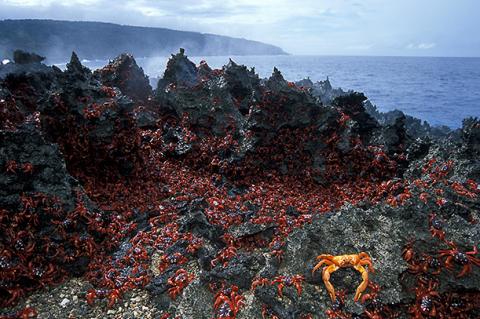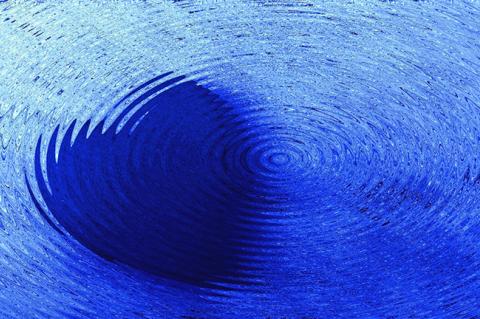X-Ray Mag #86
Destinations: Christmas Island, Dumaguete, Scotland, Mozambique⏐ Main topics: PFO, Japanese Salamanders, Dive Planning, Black and White Photography
Main features in this issue include:
Aircraft Wrecks of Gran Canaria
For over a year, I had been looking forward to a very special expedition that was planned for May 2014. But as you know, life does not always go the way you plan. The expedition was postponed, and once again, I had to find an alternative, at relatively short notice.
After getting some interesting offers in March 2014, I met a rebreather diver from Gran Canaria at the Dive and Travel Show in Madrid. He suggested that I come to Gran Canaria for wreck diving.
Black and White Underwater Photography
People like color. Is any photographer not familiar with the delighted exclamation of the viewer: "Oh, this is so colorful"? This point also applies to underwater photography; the task of creating colorful underwater pictures is the goal (and passion, in some cases) of many. But then there is also good ol' black and white photography. Yes, even underwater!
Some readers may surely be shaking their heads now, wondering what is the point of depicting a colorful underwater scene, or a sea creature, in black and white?
Christmas Island: Australia's Own Galapagos
So here we are. Five divers and I, hanging at a depth of 18m, about 80m from the reef edge over an unfathomably deep drop off, looking at each other. Did that just happen? Did we just have a rather intimate close encounter with the largest fish in the world? Apparently so.
We were alerted to this gentle giant’s approach by our dive guide Hama, who, hanging out in the blue, spotted the gentle giant approaching and alerted us with a crazy rattling of his tank-banger.
Diving Dumaguete in the Philippines
Dumaguete sits down close to the southern tip of Negros Island in the middle of Visayas Island group in the Philippines, approximately 500km south of Manila. A coastal province, it is bounded on the east by the Bohol Sea and the Tañon Strait, which serve as a natural border to the neighboring provinces of Cebu, Bohol and Siquijor.
Dumaguete seems to follow only two seasonal changes: dry and wet. June through September is the Philippines’ monsoon season, and as you might expect, conditions are warm and humid. April and May are actually the hottest time period, with average maximum temperatures that can reach 34.3°C.
Frank Walsh Portfolio
An avid scuba and free diver, American self-taught artist Frank Walsh has captured his intense fascination of the sea and its creatures in brilliant, dynamic marine life paintings and sculptures for over 30 years. X-Ray Mag interviewed the artist to gain insight into his art and creative process, and how the underwater world inspires his creations.
"I strive for accuracy and want to know all there is about the subject I paint. The best way to do that is to dive into that world."
— Frank Walsh
X-RAY MAG: Tell us about yourself, your background and how you became an artist.
Japanese Giant Salamanders
The Japanese giant salamander is a quite unique, if rather mysterious, creature that lives in rivers across western and southwestern Japan.
As both its common and Latin names (Andrias japonicus) suggest, it is an endemic species of Japan that is both protected under federal legislation and formally nominated as a special natural monument because of its cultural and educational significance.
Macro in Mozambique
There’s a cartoon that pops up on social media every now and again of a diver photographing a tiny starfish on a rock as a beautiful shark glides above him. The diver continues to concentrate on the critter as his buddies try, without success, to catch his attention. Such is the life of a macro photographer, and such was my recent experience in Mozambique.
I have been diving in Ponta do Ouro, a small Mozambican coastal village 10km from the South African border, since 2002 and love its laid-back atmosphere, rustic village life, long sandy beaches and warm blue ocean, just waiting to be explored.
PFO: Not the “Hole” Story
Researchers took a close look at PFO and arterial bubbles and reached some quite startling conclusions. Most divers know that many people have a PFO and that having a PFO makes you more susceptible to decompression sickness (DCS), but that is far from being the “hole” story, (forgive the pun).
The Scuba Confidential column in this issue is again adapted from my book, Scuba Physiological: Think you know all about Scuba Medicine?
Scotland's Islands of Forth
The entrance to the Firth of Forth, an estuary in southeast Scotland, is guarded by a number of islands, the two largest and most popular for diving being the Isle of May or May Isle, 7km (4.5 miles) from Crail in Fife and the Bass Rock, or The Bass, located 2km (1.2 miles) offshore and 5km (3.1 miles) northeast of North Berwick in East Lothian.
Although May Isle is only 57 hectares, it has been a National Nature Reserve since 1956 and is internationally important for its seabird and seal colonies. This small island has over 200,000 breading seabirds, as well as over 90,000 puffins; the island is honeycombed with their burrows.
St Croix: Changing Tides on the Caribbean Isle
St. Croix is known for nesting leatherback sea turtles but has recently become known as one of the islands through which Hurricane Maria passed. However, life on this US Virgin Island reaches beyond the tales of these two stories.
St. Thomas, St. John and St. Croix comprise the US Virgin Islands on the northeastern side of the Caribbean Sea. St. Croix is isolated from the other two islands.
The Evolution of Dive Planning
For many recreational divers, dive planning has become a lost art, but technical divers still place a large emphasis on the value of dive planning. Despite this, the methods of dive planning have changed to take advantage of changes in technology and equipment. In this article, we will look at how dive planning for technical divers has evolved and how we can best make use of modern technology while still maintaining safety.
“Plan the dive and dive the plan” has long been the mantra employed in all areas of diving. Technical divers in particular spend more time planning their dives than many recreational divers.













